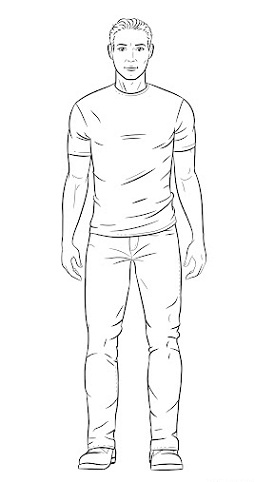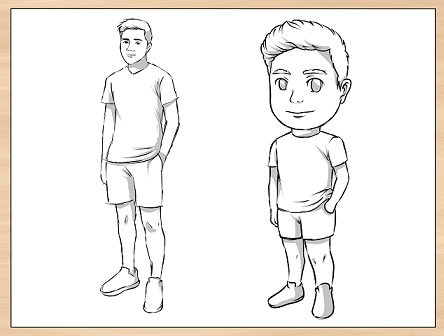Products You May Like
Drawing a person becomes much easier when you know how to break a person’s form into smaller pieces. Then you can put people in different situations and make them look real, or change their proportions if you want them to look like cartoons.
If you are new to painting, the easiest way to start drawing people is to get some basic dimensions down. The hardest part about drawing people is finding their balance right.

To begin understanding the scale (good word in terms of scales), think of someone standing, looking at you. Divide their bodies into eight sections, as if they were standing next to a height chart, but forget about normal height and place an eight-section ruler next to them.
The upper part of their hips can be part of their height exactly. If you want to keep things light, the lower part of their knees (or just their knees) would be one-quarter of their height.
The head is eight in length. The top quarter is just above the center of their chest … about where their shirt would open if they had a buttonless top button. Under their ribs, it will be on the 5 / 8ths mark.
Okay, so now that you have a basic way to check your body measurements, you have a way to check what you have drawn to see if it fits (figuratively). But some of you may say, “All right, so the head is eight feet tall … what?”
Here’s why it’s important. You will break the body into some basic conditions now. You can move those situations around to draw people to different places.
Have you ever seen those types of people made of wood in retail stores? You will think of the people you draw like that, and then make your first drawing on them as a drawing of all those shapes.
Once you begin to understand how the shapes work together in the first drawing, your second drawing will be more confident, making the lines easier and more accurate.
So, the process allows you to combine the original drawing. Every writer in the world allows himself to create one (or twelve) complex frameworks, and professional artists also create complex iconic drawings of their subjects. Only completely new artists expect to make a good painting for the first time. So take a break.
Here is the basic structure of the body. Make simple, open drawing strokes to draw these shapes – it’s okay if your first drawing looks like a storm of pencil strokes … you find out which strokes work and which don’t.
The head is oval.
When you draw a face above the eyebrows in a line that marks the bottom half of the oval, below the nose, is the line marking the lower quarter of the oval.
The chest, torso, or ribcage (all names are different from the same thing) is a large oval, almost twice the diameter of the oval forming the head.
Many artists also draw the lower part of the chest because that is how the body is shaped. But if you want to keep things simple, a large oval will do.
The buttocks are a triangular shape. The triangle pointed down.
Pumpkins extended in ovals, extended about four times as wide. Calves have similar ovals, stretched, about 1/4 shorter than thighs.
Knees and elbows and all joints are drawn as small circles.
The feet can be pulled like small triangles. The hands can be made simple to measure up to almost mitten, or like very small ovals.
